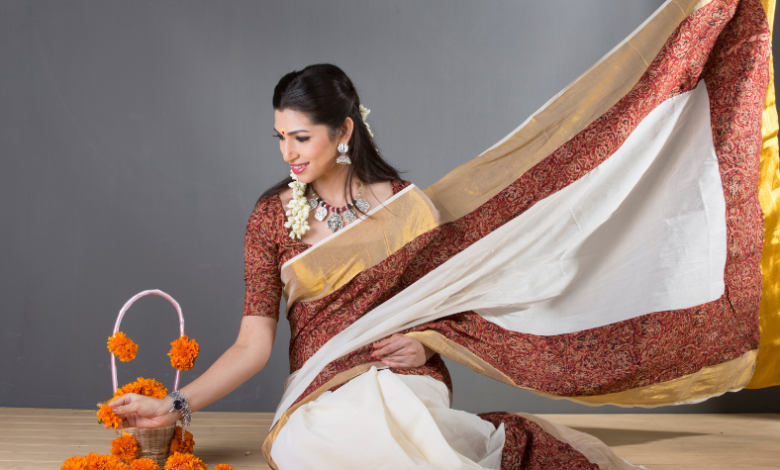Trishna white saree expression tutorial ep 3

Welcome back to the mesmerizing world of Trishna’s White Saree Expression Tutorial! In this exhilarating episode 3, we dive deeper into the captivating realm of facial expressions in dance. Get ready to unlock the secrets behind infusing your white saree performance with emotion and intensity like never before. Whether you’re a seasoned dancer or just starting out, mastering the art of expressing through your face will take your performance to new heights. So, let’s not waste another second and delve right into this enchanting tutorial that is sure to leave you spellbound!
The Importance of Expressions in Dance
Dance is a form of artistic expression that goes beyond mere movement. It is the ability to convey emotions, stories, and experiences through physicality. And while perfecting technique and mastering choreography are essential aspects of dance, one cannot underestimate the importance of expressions.
Expressions in dance have the power to captivate an audience and bring a performance to life. They allow dancers to communicate their innermost thoughts and feelings without uttering a single word. Through facial expressions, gestures, and body language, dancers can evoke joy, sorrow, passion, or any other emotion they wish to portray.
The significance of expressions becomes even more pronounced when it comes to performing in a white saree. The simplicity and elegance of this attire demand that the dancer’s face becomes the focal point of communication with the audience. Every subtle movement of the eyebrows or curling of lips conveys meaning and adds depth to the performance.
To truly excel at expressing oneself through dance requires understanding not only how each movement should be executed but also why it is being performed in that particular way. Dancers must immerse themselves in their character’s world so that every emotion feels genuine rather than forced.
One must remember that expressions are not just limited to facial movements; they encompass every part of your body. Fluid arm movements can convey grace or strength while delicate hand gestures add finesse and precision to your performance.
In order for expressions to flourish on stage during a white saree performance specifically- practice is key! Spend quality time rehearsing each expression until it becomes second nature – like muscle memory for your face! Engage with different characters you may be portraying by studying their characteristics deeply – whether it’s a goddess radiating divinity or a lovestruck heroine longing for her lover!
Remember: subtlety is often more impactful than exaggeration when it comes t+o conveying emotions through expressions during white saree performances… So don’t overdo it! Keep it authentic and relatable to your character.
So, next time you’re
Breaking Down the Steps: Facial Expressions for a White Saree Performance
When it comes to performing in a white saree, mastering the art of facial expressions is essential. Your face holds the power to convey emotions and tell a story that complements your dance moves. So, let’s break down the steps of perfecting those captivating expressions!
Start by understanding the mood and theme of your performance. Is it a joyful celebration or a poignant tale? Once you have clarity on this, you can tailor your expressions accordingly.
Next, begin with your eyes – they are often referred to as windows to the soul. Practice conveying different emotions through eye movements – from soft gazes to intense stares – each expression adds depth and meaning to your performance.
Moving on to your eyebrows – these tiny arches have an incredible ability to express various emotions. Raise them slightly for surprise or anger; lower them for sadness or seriousness; play around with different positions until you find just the right balance.
Don’t forget about using subtle movements of your lips too! A gentle smile can radiate warmth and happiness while pursed lips may signify determination or tension. Experiment with lip shapes and remember that even small changes can have a big impact on how you convey emotions.
Pay attention to your overall facial muscles. Relaxation is key here because stiff muscles will hinder your expressiveness. Practice regular facial exercises and stretches before performances so that every muscle is ready to deliver stunning expressions effortlessly.
Remember, practice makes perfect! Record yourself rehearsing and analyze where improvements are needed. Seek feedback from experienced dancers or instructors who can guide you towards achieving more nuanced expressions.
By breaking down each step of expressing through facial gestures, you’ll soon find yourself adding an extra layer of magic to every white saree performance! Keep practicing diligently as each expression brings forth new possibilities for storytelling through dance!
Tips and Tricks for Perfecting Your Expressions
Mastering facial expressions is crucial for a captivating and impactful dance performance, especially when donning a graceful white saree like Trishna. To help you perfect your expression game, here are some useful tips and tricks to keep in mind.
It’s essential to understand the emotions behind each step of your dance routine. Take the time to connect with the music and lyrics, allowing yourself to feel the intended emotion deeply. This will naturally reflect in your expressions, adding depth and authenticity to your performance.
Next, focus on enhancing your eye movements. Your eyes have the power to convey emotions effectively. Practice maintaining softness and intensity in your gaze while synchronizing it with every movement of your body.
To further elevate your expressions, work on controlling each muscle in your face consciously. Pay attention to details such as eyebrow placement, lip positioning, and jaw tension – all contribute significantly to conveying different moods accurately.
Experiment with different facial exercises that target specific muscles used during expressive dancing. Regular practice of these exercises can improve overall flexibility and control over those areas.
Additionally, watching performances by experienced dancers can be inspiring and beneficial for learning new techniques or incorporating unique variations into your own style.
Remember that practice makes perfect! Devote ample time rehearsing not only choreography but also refining expressions along with each step. Consistency will yield noticeable improvements over time.
Common Mistakes to Avoid
When it comes to expressing yourself through dance, mastering facial expressions is just as important as nailing the steps. Whether you’re performing a traditional Indian dance or any other style, your expressions can truly bring the performance to life and captivate your audience.
However, even seasoned dancers can make common mistakes when it comes to their facial expressions. Here are a few pitfalls to avoid:
1. Lack of connection: One of the biggest mistakes dancers make is not connecting with their emotions while performing. Your face should reflect what you’re feeling inside, whether it’s joy, sadness, or intensity. Practice connecting with your emotions before stepping onto the stage.
2. Over-exaggeration: While it’s important to express yourself boldly and clearly, be mindful of over-exaggerating your expressions. It can come across as forced or unnatural and detract from the authenticity of your performance.
3. Inconsistent expression: Another mistake is having inconsistent or mismatched expressions throughout a routine. Ensure that each movement and step aligns with the appropriate expression for maximum impact.
4. Ignoring subtleties: Don’t overlook the power of subtle nuances in your facial expressions. Small changes in eyebrow movements, eye contact, and mouth positioning can convey different emotions effectively.
5.
Improper timing: Timing plays a crucial role in expressing emotions through dance; failing to synchronize your movements with corresponding facial expressions may confuse or disconnect viewers from the intended message.
By being aware of these common mistakes and actively working on improving them during rehearsals and performances alike, you’ll elevate your overall dancing experience while captivating audiences like never before! Keep refining your skills by observing experienced performers who excel at emoting through their dances!
Putting It All Together: A Step-by-Step Tutorial with Trishna
Now that we’ve discussed the importance of expressions in dance and broken down the steps for facial expressions, it’s time to put it all together with a step-by-step tutorial led by the talented Trishna. In this tutorial, Trishna will guide you through each expression, helping you perfect your performance in a white saree.
First, let’s start with a calming smile. Imagine yourself radiating positivity and happiness as you gracefully move across the stage. Remember to relax your face and let that smile reach your eyes.
Next, we’ll work on conveying emotions through our eyes. Start by widening your gaze and focusing on an imaginary point in front of you. As the music swells, allow your eyes to express joy or excitement by brightening them up. To convey sadness or longing, soften your gaze and let a hint of melancholy reflect in your eyes.
Moving onto expressions using eyebrows and forehead muscles – they can really add depth to your performance! Practice raising one eyebrow at a time to create curiosity or surprise. For intense emotions like anger or determination, furrow both eyebrows together.
Don’t forget about incorporating head movements into your routine! Tilt your head slightly while maintaining eye contact with the audience during emotional moments or when expressing vulnerability. This adds an extra layer of storytelling to captivate viewers.
Pay attention to syncing up facial expressions with hand gestures and body movements for a cohesive performance that leaves a lasting impact on spectators’ hearts.
Remember that practice makes perfect! Take time every day to rehearse these expressions until they become second nature. With dedication and perseverance, you’ll be able to bring out the true essence of any dance form while wearing a stunning white saree!
In conclusion,
Mastering facial expressions is crucial for any dancer looking to enhance their performances in a white saree. By following Trishna’s step-by-step tutorial, you’ll be able to convey a range of emotions through
Conclusion and Final Thoughts
Mastering the art of expressions is crucial for every dancer, and Trishna’s White Saree Expression Tutorial Ep 3 provides valuable insights and techniques to help you enhance your performance. By understanding the importance of expressions in dance, breaking down the steps, learning tips and tricks, and avoiding common mistakes, you can take your white saree performance to a whole new level.
Expressions are not just about moving your face; they are about conveying emotions that resonate with both yourself and the audience. Through Trishna’s guidance, you can learn how to effectively communicate joy, sadness, anger, love or any other emotion through subtle movements of your eyes, eyebrows, mouth or even body language.
Breaking down the steps further allows you to understand each individual component of an expression. Whether it’s raising an eyebrow or widening your smile slightly more for a particular dance move, these small details bring authenticity and depth to your performance.
To perfect your expressions even further:
1. Practice regularly: Consistency is key when it comes to refining any skill.
2. Study different styles: Explore various dance forms that incorporate expressive elements like Bharatanatyam or Odissi for inspiration.
3. Watch professionals: Observe seasoned dancers who excel in expressing emotions effortlessly; analyze their techniques closely.
4. Experiment with mirrors: Use a mirror as a tool to observe yourself while practicing different expressions – this will help you identify areas for improvement.
While learning facial expressions is essential in dancing with a white saree ensemble specifically requires extra attention due its traditional significance.
The color white symbolizes purity and spirituality in Indian culture; therefore,it should be reflected through graceful yet powerful expressions during performances.
Avoiding common mistakes such as over-exaggeration or lack of connection between movements will ensure that your expression complements every step seamlessly. Remember that subtlety often holds greater impact than forcing exaggerated gestures.
In conclusion (without explicitly stating so), Trishna’s White Saree Expression Tutorial Ep 3 is a
